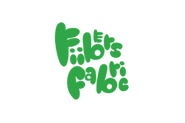Sewing is one of the oldest skills in the world. Since the Stone Age, people have been sewing their clothes together by hand. and starting in 1846, by machine. Learning how to sew is useful for anybody who wants to sustain their wardrobe. It's also helpful for making quick alterations. Picking the right sewing machine is one of the most important decisions in your sewing journey. By "correct", I mean the sewing machine that fits your needs
Before getting a sewing machine, you need to get a grip on what you need the sewing machine for:
- What are your plans with this machine?
- Do you plan on doing embroidery?
- Do you want a machine to make swimsuits?
- Are you going to travel with this machine?
- Are you going to be creating fashion collections for people to buy?
All these questions call for different machines. Before starting on this journey, having your expectations of machines is important. You may have to make some sacrifices to get the most cost-effective machine for you.
You should start by going over the different types of motors you find in your machine. This is one of the biggest factors I see a lot of people look over when it comes to getting a machine. Looking into this will help maintain your expectations in your sewing machine.
Alternating Current Motor (AC) vs Direct Current Motor (DC)
A range of cars or homes have AC motors and DC motors. Both motors are electric but there is a difference. Not to get too scientific, or weighted with details. The main difference between the two is home they "interpret" electricity.
A few takeaways from the advantages and disadvantages of an AC and DC Motor:
- AC Motor won't hesitate to start, unlike DC Motors
- Most computerized sewing machines use AC motors.
- AC Motors are somewhat bulky. Thus, it may add weight to your machine.
- Most industrial machines use an AC motor. Because it is a clutch system, the motor's output is different.
- AC motors lack power at slower speeds, unlike DC motors.
- DC Motors are faster, which means your machine will sew at a faster more precise speed.
- DC Motors handle heavier fabrics better. For example, when sewing folded canvas
Now that you understand the different motors, the fun starts. You can explore the different types of sewing machines. There is a wide range of sewing machines. But, for this guide, I will only be highlighting domestic machines.

Mechanical Sewing Machine:
This is the most common type of home sewing machine. Electricity powers this machine. A plug-in foot pedal controls the speed of these machines. They have a range of price points. My first mechanical sewing machine was a Brother which cost me around $70. It was a great machine to learn how to sew on, but as I grew as a designer, I realized I needed more precise and faster speed. I upgraded my machine to a SINGER 4411 Heavy Duty Sewing Machine, which has worked best for my needs. As a costume designer and tailor, I need a machine that travels well. It should sew a range of materials and sew fast when I'm on set. This machine does that for me. I didn't want anything too complex, as I wanted to make & handle my machine how I wanted.

Computerized and Electronic Sewing Machine:
Computerized and Electronic Sewing machines are more advanced versions of Mechanical machines. Screens and buttons replace levers and knobs. A computerized machine won't have buttons, but instead a touch screen. These machines will have touch screens. Most of these sewing machines also have "smart technology". When sewing knits on a mechanical machine, you may experience puckering. The fabric may jam or the threads may break. A computerized machine will sense something is wrong before sewing and notify you. Helping you prevent mistakes. The downfall to these machines is that maintenance on these machines isn't light, unlike a mechanical machine. If something goes wrong, it is more likely that it will need servicing. It is not as easy as fixing it yourself.
Embroidery Sewing Machine:
These machines have a variety of embroidery patterns and designs built in. They computerized most of them, with the ability to add extra designs. These machines also come with basic sewing options, with an included embroidery hoop. These machines have a lot to work with, and the price reflects that.
Quilting Sewing Machine:
These machines are like embroidery machines. These machines have longer arms for bigger projects. They also have a bigger workspace to handle quilts. These machines allow quilters to finish projects faster. From my experience, the bigger the machine the more it shakes when you use it at max speed. The majority of this work is better installed on a sewing table.

Overlock Machine/Serger:
Most designers see an overlock/Serge machine as a necessity. The Overlock machine finishes hems, sews sturdy seams, or cleans fabric edges. Look inside what you are wearing. If it's not lined, you will see small connecting hoops around the seams. This machine does that. I am a firm believer that your garments are only as good as they are inside out. An Overlock machine cleans that up. If you plan on selling your pieces, get an overlock machine in addition to a regular machine. Yet, if you are planning on designing with knits, this may be the only machine you need.
When starting to learn how to sew, it can be overwhelming to decide which machine to get. Domestic machines are a great place to start. They are smaller and cost-effective for designers. There are plenty on the market. The first thing you need to do before purchasing a machine is to understand what you plan on doing. As you sew, your needs will change, and you can upgrade your machine. However, don't let picking a machine hold you back from starting.
-Love, Coco.



